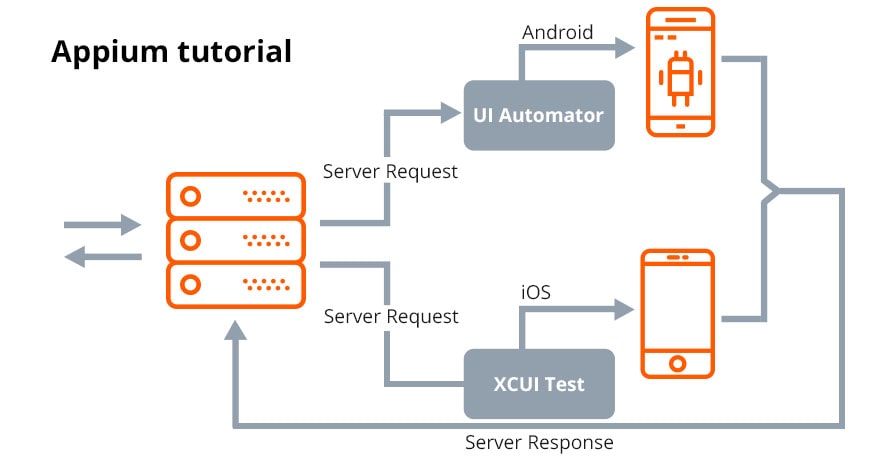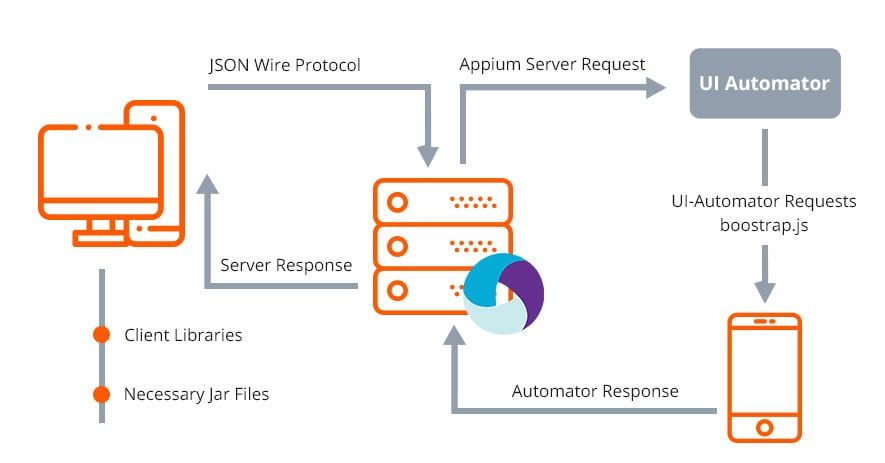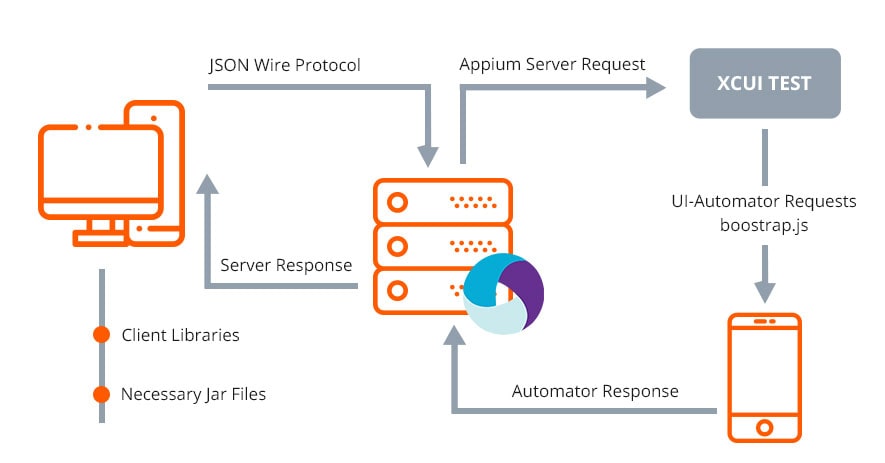How to survive Mobile Automation with Appium? Basic Challenges and Solutions
by Viktoria Byk | October 17, 2019 7:10 am
Appium lets you test all types of apps: hybrid, native or web ones. It doesn’t matter on which OS an app works, Appium doesn’t need a code of source to make effective automation.
No application installed – Appium principles allow you to test programs without modifying them. It’s about customization of the application, free choice of specific framework or language for running and writing tests. But let’s see what else Appium could do to make Mobile Automation[1] successful.
Principles of Appium. How it works on Android and iOS
Basically, Appium is a simple Javascript server that is created to follow the generic architecture of client-server. It converts clients’ requests to automated scripts and then gives a response.

Appium on Android
In this Operation System, Appium uses the UIAutomator framework. Android also developed a system, UI Automator, for these purposes:
- Through JSON Wire Protocol, a user connects to the server to communicate.
- The server makes a session where it’s checking the user’s inquiries so they could be performed.
- Communication continues with bootstrap.jar: it runs devices’ performance.
- After that, bootstrap.jar takes it’s part in the TCP server to deliver command for testing.
Here’s how it looks:

Appium on iOS
Here, for successful collaboration with interface elements on Apple, we got the XCUI API.
- For communication, we are connecting to the server through the JSON Wire Protocol.
- In its part of work, the server makes an automation session and does the wanted by user abilities.
- Machine’s performing is run by bootstrap.js that communicates with XCUI Test.
- Next, it’s time for Bootstrap.js and after the accomplishment of the requirements, the user informs the server with the log details of the accomplished request.

Main challenges and solutions of Appium mobile testing
Till the perfect app is not created, we need testing for every product and its features. So, here are some struggles that can happen if you choose Appium to test mobile devices:
- Framework and Scaling
Work with Appium is often asked to be local. Because of this, it utilizes upscale environmental conditions. It also runs on different operating systems. Businesses should check all configuration programs and operating systems. For possible scenarios issues, you need to test with exterior structures a larger matrix. Appium connects to only one device on each machine.
- Test Development
The corporate test application needs the necessary credentials and data in it. This is what you need to handle your elements properly. Сircuit must check all connections if an application uses, for example, camera or NFC.
- Test Management
Testers need a program to ensure accurate release. Appium testing for mobile has its own challenges. One of them is spending a lot of time on Appium integration with third-party system capabilities.
There’s also a thought that it’s available to automate the tests. So, you are looking for one surface. It can perform on dozens that are not on hundreds of structures. Testers using Appium set up a network of equipment and machines to test their researchers. As a result, managing a possible Extra Application Cycle (ALM) can be very important.
Why Should You Choose Appium?
Why people still practice Appium for mobile app automation? Here are the benefits that could be solutions for your cases:
- Large-scale automation for enterprise environments locally. Devices and testing projects can be measured.
- Cast distant capabilities, because they are critical to outsource teams. Companies make their local cloud so everyone may do whatever they need: connect or run tests.
- Quick and easy setup including scripting. Enterprise users have an opportunity to set up their environment for test on a Windows machine while connecting to any number of iOS and Android devices.
- Enhanced functionality. Full automation[2] includes testing on non-standard devices (home screen, phone settings, battery).
- Testing Features for performing. Companies can simulate any kind of real-world environment by identifying locations along with servers.
- Absolutely customized reporting gives Quality Assurance engineer accessible results.
QATestLab wishes the best way of case testing for you[3] with this useful article. Check more in our blog!
Learn more from QATestLab
Related Posts:
- Mobile Automation: https://blog.qatestlab.com/2018/12/12/automated-mobile-testing/
- Full automation: https://blog.qatestlab.com/2019/07/16/automation-testing-challenges/
- the best way of case testing for you: https://qatestlab.com/services/test-automation/
- Automation Testing for Mobile Apps: Why It’s Essential and Our Key Services: https://blog.qatestlab.com/2025/05/13/automation-testing-for-mobile-apps-why-its-essential-and-our-key-services/
- E-show 2025: The Rise of AI and Automation in E-commerce: https://blog.qatestlab.com/2025/04/22/e-show-2025-the-rise-of-ai-and-automation-in-e-commerce/
- How One Bug Can Wreck Your Reputation — And How QA Prevents It: https://blog.qatestlab.com/2025/04/01/how-one-bug-can-wreck-your-reputation-and-how-qa-prevents-it/
Source URL: https://blog.qatestlab.com/2019/10/17/mobile-automation-appium/

